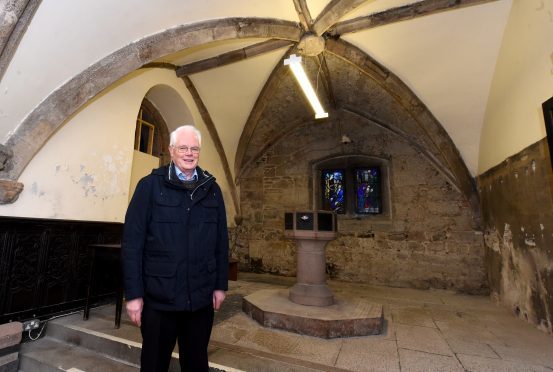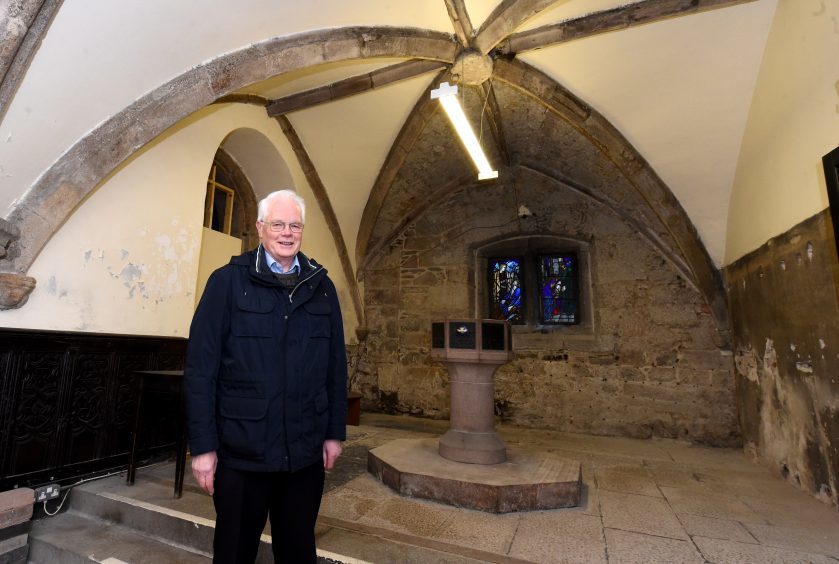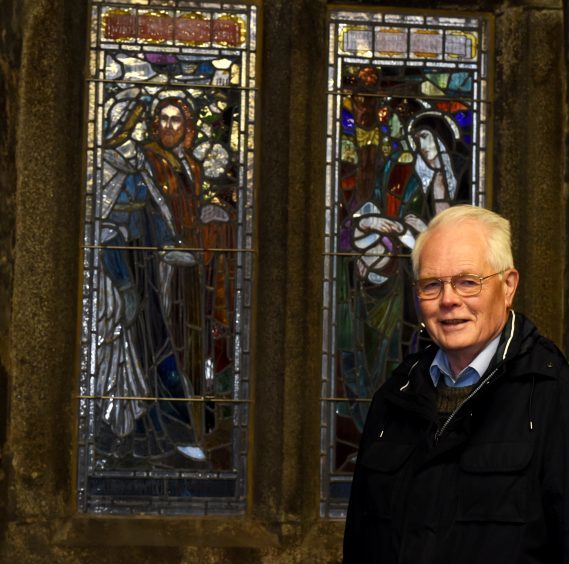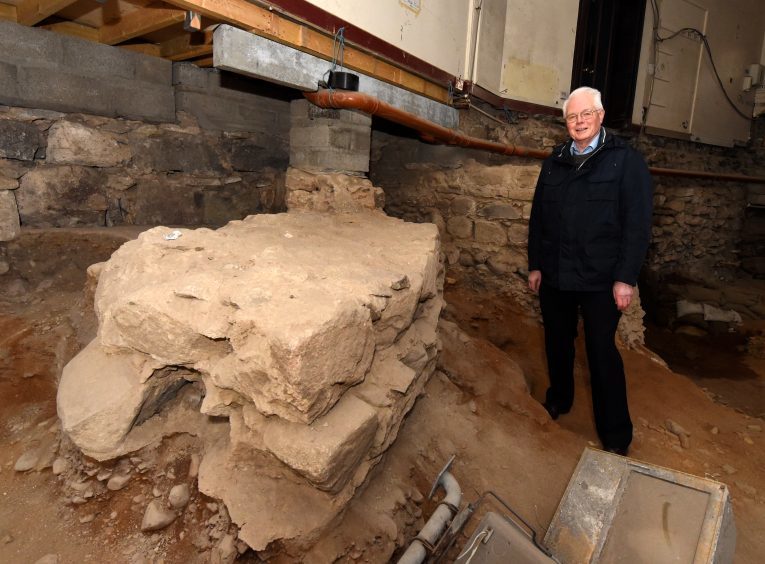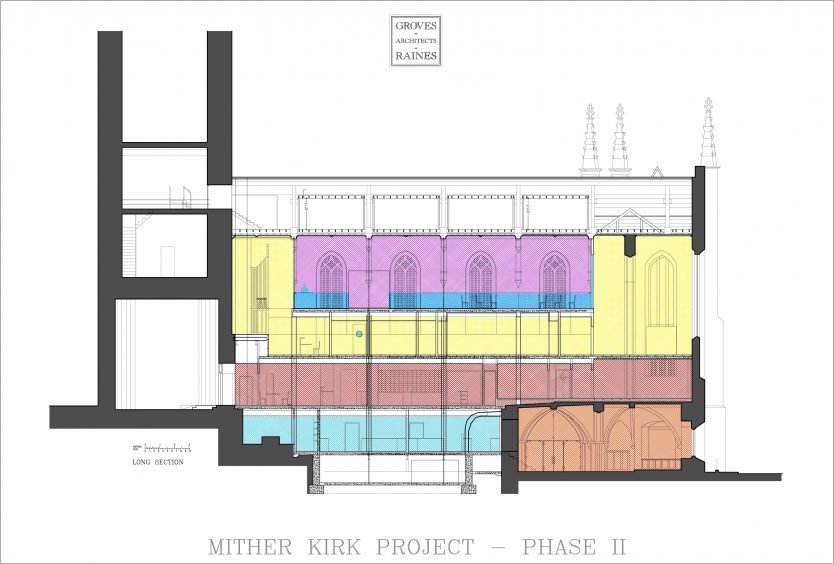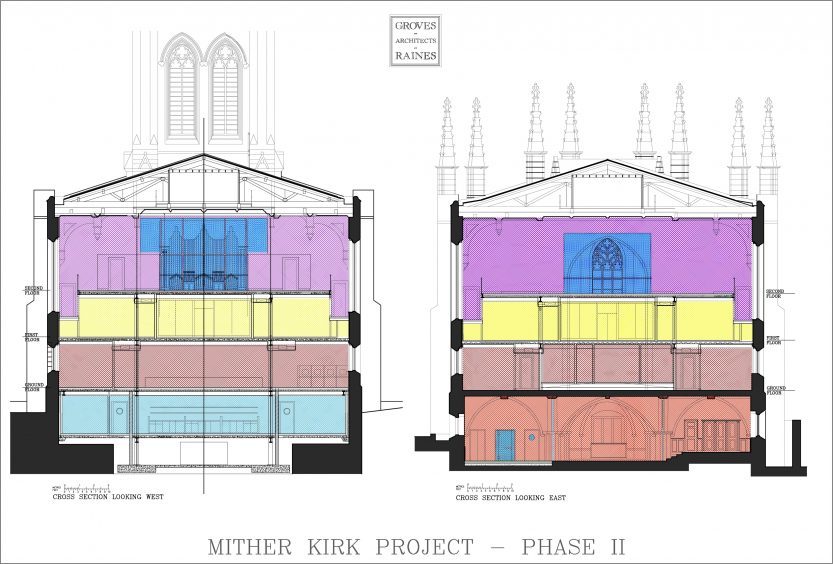Heritage enthusiasts have unveiled an ambitious £5.5million plan to breathe new life into a neglected landmark.
The east church of Aberdeen’s Mither Kirk has lain empty for almost 15 years after it was deemed surplus to religious requirements.
But the trust which has been given responsibility for the future of the historic site is now ready to reveal its ambitious blueprint for the building.
The long-awaited revamp would involve the interior being divided into four floors – including one to house the Granite City’s burgh records.
Town house chiefs are keen for the public to see the archive – which is recognised by the UN as among “the world’s most prized documentary heritage”.
A draft business plan, drawn up by the Open Space Trust, stated the city council was “seriously considering contributing to the capital costs”.
However, the document, which shows initial plans drawn up by specialist architects Groves Raines, notes that “an offer has yet to be made in writing”.
One unnamed private donor has already given £100,000 and they and others are now being lined up to back the project financially.
About £50,000 of the cost is for the re-burial of 2,000 bodies uncovered during a major archaeological dig of the site.
That excavation, a decade ago, found evidence of churches on the site going back to the start of the 12th century.
Under the plans, the basement area would showcase the development of Aberdeen – featuring remains such as the city’s oldest surviving standing wall as part of the exhibition.
Objects from the extensive civic archives – which history fans complain are never seen in public – could also go on display.
One floor would be set aside for a cafe and the upper level transformed into a function space to attract project launches, recitals, exhibitions and lectures.
The Open Space
Trust has already raised £2million in grants and loans, which went towards replacing the roof and other weatherproofing, window repairs and excavations.
The Heritage Lottery has earmarked £184,000 towards the renovation of the St Mary’s chapel – about 40% of the cost – which it is planned would remain “an area of peace and tranquility”.
Project leader Arthur Winfield, a church elder, is delighted that years of hard graft have produced a firm plan.
The retired RGU academic has been closely involved since 2003 when he was asked to take responsibility for the future building after the existing congregations merged and decided to use only the west church.
Once the trust was established, the Church of Scotland donated the unused part, which dates in its current form from 1835.
Mr Winfield said: “It is a heritage site right in the heart of the city, but many people don’t know it’s there.
“It is simply overlooked. In the winter, you have your head down and in the summer you can’t see it from Union Street because of trees.”
He said he believed the project had the power to “revitalise this part of the city centre”.
